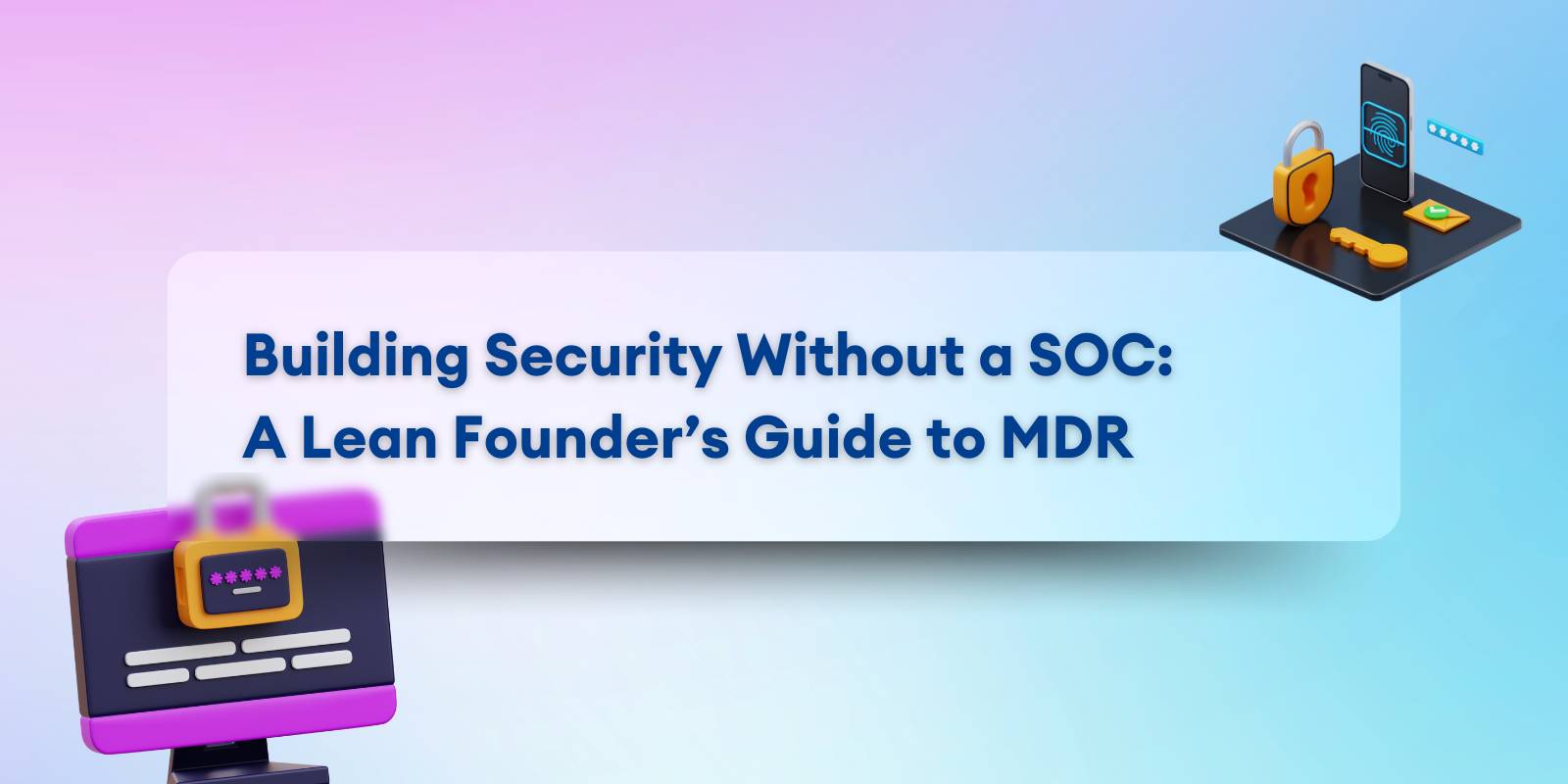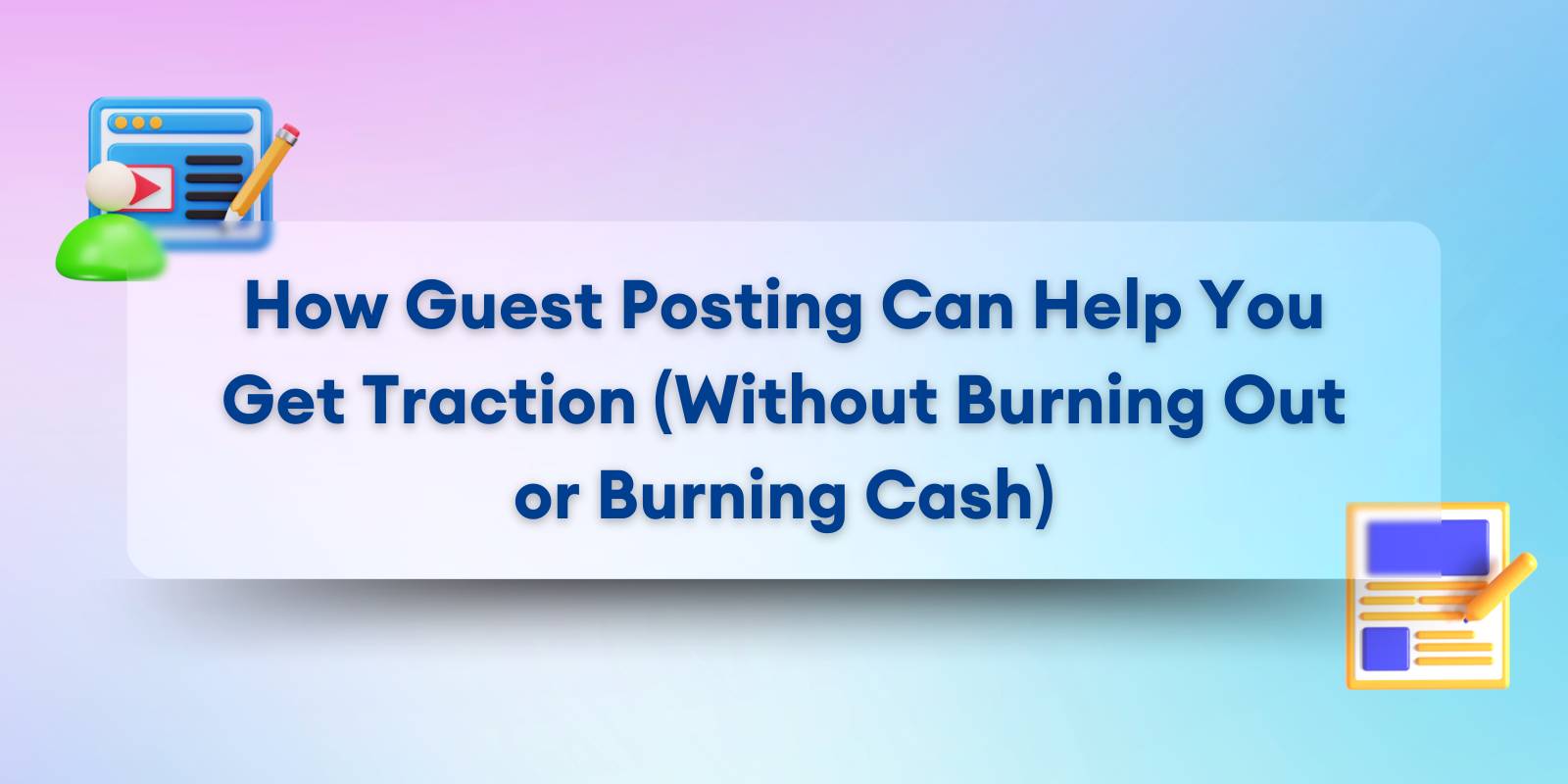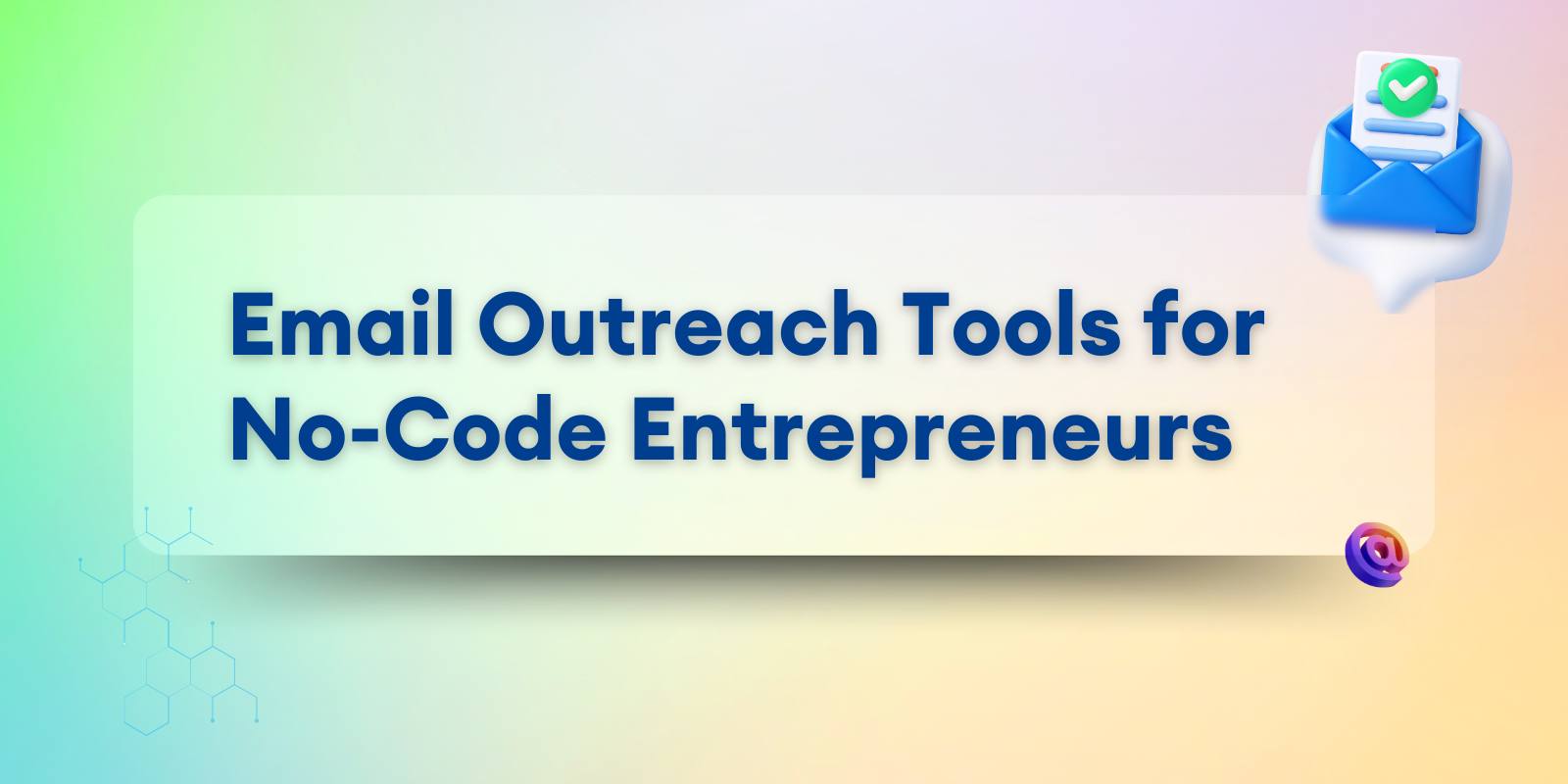
Here’s how it usually goes.
You spin up a Google Workspace account. Add Notion, Stripe, a few Zapier automations, maybe Superhuman if you’re feeling fancy. You’ve got no dev team, no IT guy, no one checking logs. It’s just you and a lean little stack that gets the job done.
Everything’s in motion. MVP live. Some early revenue. Customers trickling in. You’re heads-down building.
And then one day, you wake up to a Slack message from a friend:
“Hey, your site is down. Also… did you send me this weird email?”
It wasn’t you.
But someone else has your credentials. And they’ve been inside your stack for hours.
Here’s the part no one tells you:
Most solo founders don’t get hacked because they’re big. They get hacked because they’re easy.
No firewall. No 24/7 monitoring. No alerts.
Just a browser full of saved passwords and a dozen SaaS apps all connected to one email address.
This article isn’t about making you paranoid. It’s about showing you what you can actually do about it, without building a security team or learning cybersecurity.
It’s about Managed Detection & Response (MDR).
And why it’s one of the few things that can protect your business without becoming your full-time job.
Let’s talk about the stuff you won’t hear in startup Twitter threads. The real risk. The real fix. And how to set it up before things go sideways.
The Hidden Security Risks in Your Solo Stack
The Stack Is Lean. The Attack Surface Isn’t.
Let’s be real. You’re not running some bloated, over-engineered enterprise beast. You’ve kept it simple, on purpose.
Your stack probably looks something like this:
- Gmail or Google Workspace for everything
- Notion for docs and planning
- Stripe for payments
- Zapier gluing it all together
- A laptop, a browser, and a million tabs
You’ve automated ops, skipped the IT team, and built something real on your own. But here’s the problem:
That lean setup? It’s wide open.
There’s no firewall. No access control. No endpoint protection. If someone gets into your Gmail, they don’t just see your inbox, they get a front-row seat to your entire business.
Because everything is connected.
Stripe links to Gmail. Notion invites go through Gmail. Your domain registrar? Yup, also tied to that same login.
One exposed credential = total access.
And it doesn’t even take a genius hacker. It takes a fake login page. A reused password. A third-party tool you forgot about. A public Wi-Fi moment at a coworking space.
“I’ll Worry About It Later” Is a Risky Bet
Most solo founders push security to the bottom of the list.
The thinking goes:
Get to MVP, get some traction, and then I’ll invest in tools.
Totally understandable. But here’s the catch:
Threats don’t wait for product-market fit.
They don’t care if you’re pre-revenue.
They care that you’re storing data, accepting payments, and using tools that can be exploited.
If your Stripe account gets drained tomorrow… are you ready to deal with that?
If a client’s data gets exposed through one of your SaaS tools… what’s your next move?
This Isn’t Paranoia. It’s Ops.
You’re not trying to build the next cybersecurity startup.
You’re just trying to protect what you’ve built, without burning hours researching tools or babysitting dashboards.
The good news? You can do that.
But it starts by admitting that your solo stack, as tidy as it is, still needs backup.
In the next section, we’ll talk about what that backup looks like, and why MDR might be the only thing standing between you and total chaos.
What Is MDR and Why Should You Care?
EDR, XDR, MDR… What Even Is All This?
Let’s cut through it.
Most “security tools” throw acronyms around like you’re supposed to just know what they mean. You’re not a CISO. You’re a founder trying to not get wrecked.
Here’s the plain-English version:
- EDR (Endpoint Detection & Response) is like advanced antivirus. It runs on your devices and watches for weird behavior.
- XDR (Extended Detection & Response) takes that same idea and connects it across more systems; email, cloud, apps, etc.
- MDR (Managed Detection & Response) gives you real humans watching your back 24/7. They spot threats. They contain them. They tell you what happened and what to do next.
So while EDR and XDR are basically tools you need to configure and manage, MDR is a service. You plug it in, and it works.
You don’t need to know how to interpret threat signals.
You don’t need to respond in real time.
You just need to know someone else is doing that for you.
Why MDR Hits Different for Solo Builders
You’re not going to hire a security analyst.
You’re not going to spend half a day a week checking logs.
You don’t have time to set up and manage 15 different dashboards.
MDR is the only option that works with that reality.
It’s protection that runs quietly in the background. You get alerted when it matters. And when something’s off, a real person takes action.
That’s the difference.
Not a tool. A team.
Not a notification. A fix.
And no, it doesn’t require selling a kidney to afford it.
If you're evaluating options, learn about Cyber Protect Cloud's MDR capabilities to see how this works in a solopreneur-friendly setup.
That’s the only link you’ll see in this article. No promotions. No follow-up pitch. Just one option worth checking out if you’re thinking, “okay, this sounds like something I should probably have.”
Next up: how to actually protect your solo stack without blowing up your workflow.
A Simple “Lean Security” Playbook
You don’t need a five-layer security framework.
You don’t need a policy document.
You just need a setup that keeps your stack safe while you focus on shipping.
Here’s the simple way to do it, using the tools you already have, and plugging in MDR as the silent partner behind the scenes.
Step 1: Map Your Attack Surface
Know what you’re actually protecting.
Most solo founders only have a few key points of failure. That’s good. It means you can cover them without hiring anyone.
Here’s what you want eyes on:
- Your device: If your laptop gets compromised, it’s game over.
- Your email (Gmail or Workspace): It’s the master key to your entire digital business.
- Your cloud tools: Think Notion, Airtable, Zapier, Superhuman, Webflow, Calendly, etc.
- Your payment stack: Stripe, PayPal, Paddle, Lemon Squeezy… whatever’s moving money.
- Your domain + DNS: If someone gets access here, they can reroute everything or take it offline.
If MDR can monitor these entry points and flag suspicious behavior, you’re covering the 90% that actually matters.
Step 2: Decide How You Want Threats Handled
You don’t have time for “alert fatigue.” And you definitely don’t want to get a Slack ping at 2 a.m. telling you to go investigate a threat.
With MDR, you can define your response model:
- Notify only: They see something, you get an alert. You handle the rest. (Fine if you like stress.)
- Assist mode: They flag the issue, give you guidance, and help you take action. (Still puts some load on you.)
- Contain and report: They detect the threat, isolate it, contain the damage, then loop you in. (This is what most solo founders actually want.)
Set the response level once. Let the system run. Get on with your life.
Step 3: Connect It to What You’re Already Using
You don’t need to change your stack.
MDR isn’t a replacement for your tools, it’s a layer that works alongside them.
It can plug into:
- Slack (if that’s how you work)
- Email (your default, most likely)
- Notion or Trello (if you use tickets or task boards)
- Your browser or device (for endpoint-level visibility)
The point is: You don’t have to rebuild your setup to stay protected.
You just need something watching it that isn’t you.
Next, I’ll show you what MDR looks like when stuff actually hits the fan.
Because your risk isn’t theoretical. It’s already in your inbox, your tabs, your integrations.
Real-World Scenarios You’ll Actually Face
You don’t need to imagine edge-case hacker stories pulled from Reddit.
You just need to look at what’s already sitting in your browser tabs and email inbox.
Here’s how it plays out when you’re a lean solo founder, and things go sideways.
Scenario 1: You Reused a Password (Once), Now They’re Inside Your Gmail
It happens fast.
You used the same password for an old Airtable account that got breached in some dump you never saw.
Someone runs a credential-stuffing script and logs into your Gmail while you’re sleeping.
Now they can:
- Reset your Notion password
- Invite themselves into your Stripe dashboard
- Download files, export data, impersonate you, or worse
With MDR?
- That login location doesn’t match your usual pattern.
- The behavior flags as suspicious.
- Access is shut down, an alert goes out, and you fix the issue before the real damage begins.
- You wake up to a summary, not a disaster.
Scenario 2: A Contractor’s Compromised Laptop Exposes Your Stripe API Keys
You’re working with a contractor who has access to a few things. They use a shared device, maybe skip the updates. One click on a sketchy link, and now their machine is the entry point to your stack.
An attacker pulls the API key from local storage or captures a token. They start messing with live data, maybe even creating test charges through Stripe.
With MDR?
- That traffic pattern stands out immediately.
- The endpoint gets flagged.
- The key is invalidated.
- The action is logged.
- You’re notified.
It’s handled before support tickets from angry customers start rolling in.
Scenario 3: You Fall for a Phishing Email That Looks Really Legit
It’s from “Notion Support.” It uses your name. It says you need to verify ownership or risk losing your account.
You click. You log in. You move on.
Except now, someone has your Notion login—and they’re already inside the workspace where you store customer notes, project roadmaps, payment links, maybe even login credentials.
With MDR?
- The link you clicked is known malicious.
- The system blocks the command execution or the browser redirect.
- You get a message: “This link was flagged. No action taken. No breach occurred.”
It’s the best kind of outcome: the one where nothing bad actually happens.
The Pattern: All of This Starts Small
- A reused password
- A sketchy link
- An exposed API key
- A device you didn’t think to secure
None of it feels like “a security breach” at first.
Until it is.
These aren’t rare scenarios. They’re regular stuff that happens to small teams all the time, because no one’s watching. And the founder is too busy doing, well, everything else.
How to Evaluate MDR Without Drowning in Comparisons
Once you realize MDR makes sense, it’s easy to fall into the research trap.
You start Googling. Suddenly you’re knee-deep in “cyber kill chains,” vendor comparison matrices, and enterprise feature sets that mean nothing to a team of one.
Stop.
You’re not building a SOC. You’re just trying to not get wrecked while you build your business.
Here’s how to evaluate MDR the solo-founder way.
What Actually Matters
Forget the jargon. Look for these five things:
1. Covers the stuff you actually use
Make sure it monitors the tools and surfaces you care about:
- Gmail or Workspace
- Endpoints (your laptop)
- SaaS tools (like Notion, Zapier, Stripe, etc.)
- Cloud access and API keys. If it doesn’t protect the things that power your business, what’s the point?
2. Has humans in the loop
You want real analysts who detect, confirm, and contain threats.
Automated tools alone can miss stuff, or worse, flood your inbox with noise you don’t understand.
3. Responds fast and with clarity
If something goes wrong, you need to know:
- What happened
- What was done
- What you need to do next (ideally, very little)
Good MDR keeps you in the loop without making you do the work.
4. Plays nice with your workflow
Look for MDR that can send alerts or reports via Slack, email, or whatever tool you actually check.
No extra dashboards. No logging into another platform unless you want to.
5. Pricing that doesn’t feel like a hostage negotiation
No “request a demo” buttons. No vague quote pages.
Just straight-up, solo-founder-friendly pricing. That tells you this tool was built for real people, not Fortune 500s.
What ROI Actually Looks Like
You’re not buying peace of mind just to “feel safer.” You’re preventing real loss.
MDR pays for itself when it:
- Blocks one phishing email that could’ve taken down your Gmail
- Stops one API key from getting exploited in Stripe
- Flags one unusual login before it turns into a full-blown breach
- Cuts your downtime from days to minutes
- Keeps your customer data safe so you don’t have to send a “we messed up” email
Compare that to what you'd lose if something slips through:
Time. Trust. Revenue. Reputation. Possibly the whole thing.
Lean MDR Evaluation Checklist
Use this as a filter before committing to anything.
✅ Covers your stack (email, devices, SaaS, payments)
✅ Includes real humans, not just automated alerts
✅ Offers “contain and report” mode by default
✅ Sends alerts through tools you already use
✅ Pricing is clear and solo-friendly
Conclusion: Security Doesn’t Have to Be Complicated or Expensive
You already do everything else.
You build. You ship. You talk to users. You handle support. You run the whole damn show.
You shouldn’t also have to become a cybersecurity expert just to keep your business safe.
The good news? You don’t.
You don’t need to study ransomware trends.
You don’t need to read threat intelligence reports.
You don’t even need to understand how an attack works.
You just need to make one smart decision right now:
Get something in place that watches your back.
MDR gives you real protection, real response, and real peace of mind, without stealing your time or attention. It’s like hiring a security team that never sleeps, never overcomplicates things, and never gets in your way.
Because your business shouldn’t be one click away from chaos.
And now, it doesn’t have to be.




